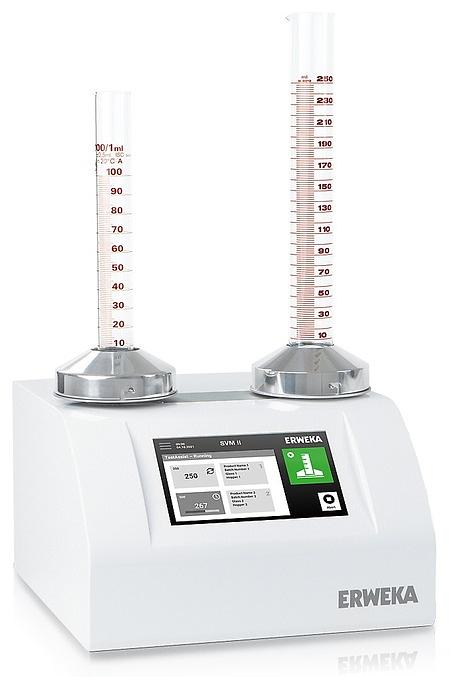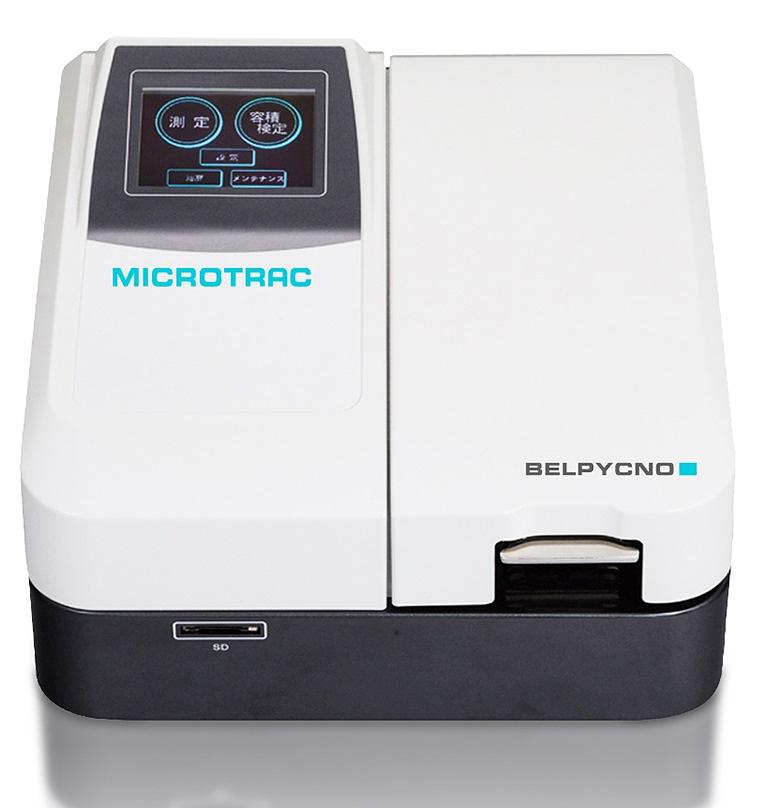
Powders are at the heart of countless industries – from food and nutraceuticals to pharmaceuticals, chemicals, and materials science. Whether you're formulating a protein powder, producing tablets, or developing a new additive, how your powder flows can make or break your process. Poor flow leads to clogs, inconsistent dosing, uneven mixing, and packaging headaches. Good flow, on the other hand, ensures a smooth, predictable, and efficient production line.
Two key properties underpin flow behavior: density and flowability. By understanding how powders pack, settle, and move, you can fine-tune formulations, optimize equipment settings, and improve product quality.
Tapped Density Testing – Compacting for Clarity

One of the most practical ways to assess powder flow characteristics is through tapped density testing. The SVM II Tapped Density Tester from Erweka is designed for exactly this purpose. It works by mechanically tapping a graduated cylinder containing the powder. Through repeated taps, particles settle and compact, and the resulting volume change provides valuable information about the powder’s bulk and tapped density.
Tapped density measurements give insight into a powder’s compressibility and cohesiveness. For example:
- A powder that compacts significantly under tapping may indicate poor flowability, as particles are prone to bridging and sticking together.
- A powder that shows minimal volume change often flows more freely, which is desirable in automated processes.
By analyzing bulk and tapped densities, manufacturers can calculate important flow indices, such as the Hausner Ratio and Carr’s Compressibility Index, both widely used to evaluate powder handling properties. The SVM II provides precise, repeatable measurements that are crucial for consistent process control and regulatory compliance.
Powder Density Analysis – Seeing the Full Picture

While tapped density reveals how powders behave under compaction, true density provides another critical perspective. The BELPYCNO Powder Density Analyzer from Microtrac measures true density using gas pycnometry. This technique determines the volume occupied by the solid portion of the powder (excluding pores and spaces between particles) by measuring the pressure changes of a gas in a calibrated volume.
Why does this matter? The difference between bulk/tapped density and true density gives you insight into porosity, which directly affects flow behavior, compressibility, and even dissolution in pharmaceutical applications. High porosity can signal lightweight powders that may be prone to segregation or poor flow, while denser powders may require different handling strategies.
The Benefits of Combining Both
Using tapped density (SVM II) and true density (BELPYCNO) measurements together provides a comprehensive view of powder behavior. This dual approach allows you to:
- Predict and improve powder flow in hoppers, feeders, and mixers.
- Optimize formulation properties for better processing and end-product performance.
- Identify potential flowability issues early, before they cause costly production disruptions.
- Support regulatory documentation and quality control with standardized, reliable data.
Powder flowability and density may seem like small details, but they have a big impact on manufacturing success. By leveraging tools like the SVM II Tapped Density Tester from Erweka and the BELPYCNO Powder Density Analyzer from Microtrac, manufacturers can gain precise, actionable insights into powder behavior. The result is smoother production, higher quality products, and fewer surprises on the line.
When powders flow smoothly, everything else follows.
